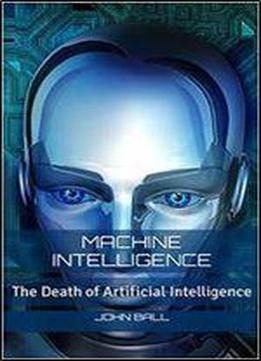
Machine Intelligence: The Death Of Artificial Intelligence
by John Ball /
2017 / English / PDF
1.7 MB Download
We sit at the threshold of the next generation of artificial intelligencethe development of true machine intelligence. Today, the best of A.I. has given us virtual assistants like Apples Siri and big data question/answering systems like IBM Watson. These statistical systemsbased on Natural Language Processinghave accomplished a great deal. But, these assistants dont really understand and do what we ask of them. They understand simple questions but cannot respond to complex or even slightly ambiguous ideas. Imagine you say, I dropped my book and walked out of the kitchen to the bedroom. Where's the book?" A three-year old can grasp the meaning but your assistant can only scratch their virtual head.
Brains arent what you think they are. They arent computers and they dont process data. Cognitive science tells us that the brain is more of a pattern-matching machine than a processing machine. Understanding meaningNatural Language Understandingcant be achieved through statistical processing. NLU relies on a richer environment that looks at patterns in linguistics, as well as sensory perceptions. Machine Intelligence, first published in 1998, takes the reader through the research that lead to Patom Theory, a brain-based theory based solely on a brain that stores, matches, and uses patterns.
Ball, a cognitive scientist, began exploring the gap between how our brains interpret information and how computers work in 1983. Research, development collaborations and idea exchanges with the likes of A.I. co-founder and Turing Award winner Marvin Minsky became the foundation of Patom Theory. The theory has laid the groundwork work for NLU software developments that may lead to truly intelligent machines.











